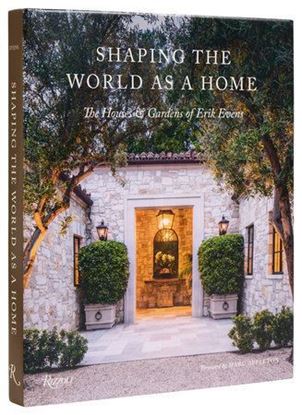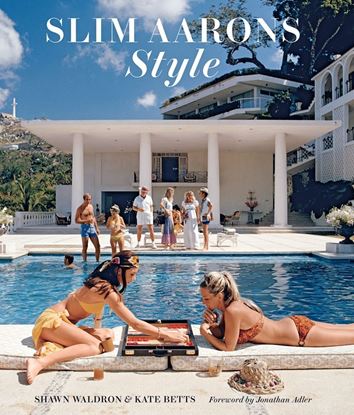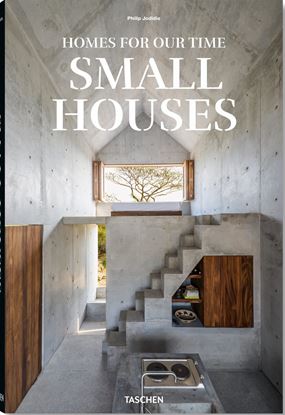

SHAPING THE WORLD AS A HOME
Evens has long been considered one of the country’s leading contemporary architects who aspires to create the complete living environment, in the same vein as Gil Schafer, Bobby McAlpine, Ray Booth, and Stanley Dixon. His inspiration is drawn from classical traditions and informed by contemporary indoor-outdoor life—in this case the indoor-outdoor life of California.
4,200
SHOES A-Z. THE COLLECTION OF THE MUSEUM
Sky-high, ornate, and the pinnacle of glamour, both restrictive and liberating, art object and deeply ordinary, shoes tell the story of shifting attitudes toward desire, power, and wealth throughout history. Lace up for a journey through the most enviable shoe closet from the permanent collection at The Museum at the Fashion Institute of Technology— and four centuries of fashion’s hardest working accessory.Featuring designs from the likes of Salvatore Ferragamo, Christian Louboutin, Manolo Blahník, and Roger Vivier, Shoes A–Z. The Collection of The Museum at FIT celebrates fashion’s most revolutionary and coveted labels with more than 400 styles selected from the Museum’s pristinely preserved collection. Texts from Daphne Guinness, Valerie Steele, Colleen Hill, and The Museum’s expert team of curators explore the unique legacy of each of the featured designers and the lasting cultural impact of the shoe. Also featured are custom illustrations by Robert Nippoldt. Exclusive access to original sketches, advertisements, and photographs from the designers’ private archives further illuminate the genius behind the functional, sculptural delights we cannot live without. Also available as Collector’s Edition of 1,000 numbered copies, including three prints by Manolo Blahník created exclusively for this edition with a hallmark stamp.
9,500
SI LAS JOYAS HABLARAN
* Un cofre del tesoro rebosante de historias olvidadas sobre las joyas que han acompañado al ser humano desde los albores del tiempo, de la mano de la experta en joyería Carol Woolton. Indaga en la historia y el significado cultural del ornamento humano, en una narración abundante en detalles y anécdotas variopintas. Carol Woolton, experta en historia de las joyas, directora de Joyería en la edición británica de Vogue y presentadora de un pódcast especializado, es la guía perfecta en este largo viaje con siete paradas: aretes, sortijas, cuentas, dijes, broches, brazaletes y tocados. Una inmersión en culturas de todo el mundo y todas las épocas para narrar la fascinante historia de los torques de plata vikingos, el jade imperial chino, los anillos posies del siglo xvi, las gemas naturales, los motivos de serpiente, los camafeos romanos, las joyas de boda hindúes, el oro etrusco, las monedas de la Grecia clásica, los piercings, las tiaras o las tobilleras.an cautivador y resplandeciente como sus protagonistas, este libro hará las delicias de todo amante de la joyería.
1,650
SLIM AARONS: STYLE
Slim Aarons: Style showcases the photographs that both recorded and influenced the luminaries of the fashion world. This collectible volume features luscious early black-and-white fashion photography, as well as color portraits of the fashionable elite—like Jacqueline de Ribes, C.Z. Guest, Nan Kempner, and Marisa Berenson—and those that designed the clothes, such as Oscar de la Renta, Emilio Pucci, Mary McFadden, and Lilly Pulitzer.
Featuring a number of never-before-seen images and detailed captions written by fashion historians, Slim Aarons: Style is a collection of the photographer’s most stylish work.
Slim Aarons, at least according to the man himself, did not photograph fashion: “I didn’t do fashion. I did the people in their clothes that became the fashion.” But despite what he claimed, Aarons’s work is indelibly tied to fashion. Aarons’s incredibly influential photographs of high society and socialites being unambiguously themselves are still a source of inspiration for modern day style icons.
This coffee table book is perfect for sharing, displaying, and gifting.
5,800
SMALL HOUSES
A Small House is a tribute to the endless artistic inventiveness of architects and ingenuity of perception of the familiar and known concepts. It is also a conscious pivot towards sustainability and reduction of impact on the environment as well as a daring attitude of change in lifestyle. As humanity faces inevitable pressures such as climate change, an increase in population, and strain on resources, these solutions are helping shape what the world may look like in the future.Whether in the dense urban areas of Tokyo, the wilderness of Australia, the woods of Canada, or a rooftop in Ecuador, this is the world of Small Houses. The one common point they share, is that they all have an area of no more than 100 square meters. Spanning 25 countries such as Brazil, Hungary, South Korea, Netherlands, USA, Japan, and Australia, described here there are houses designed by 57 architects, including Takeshi Hosaka’s Love2 House, Aranza de Ariño’s Casa Tiny, and the work of Jakub Szczesny, Charles Pictet, Lada Hršak, BIG, and Fran Silvestre, among others. This is a journey not only through recent evolutions in architectural design and creativity, but it is also a step toward a more sustainable world.
5,700
SMALL HOUSES. HOMES FOR OUR TIME (XL)
Descubra la mejor selección mundial de arquitectura de pequeño formato. Con obras de Alphaville, Olson Kundig, BIG, Aranza de Ariño, Takeshi Hosaka y MAPA, esta cuidadosa recopilación de viviendas pequeñas pero delicadas demuestra que 100 m2 dan para mucho en un edificio inteligente y sostenible. Grandes sueños, construcciones pequeñas.
4,800













